Those who read my previous article on the Kodak Ektra (I’m still waiting for my money back, by the way…) will recall that I was far from impressed with its performance as a camera. In short it is a true triumph of pastiche over prowess and the “customer service” truly sucks.
Sigh…..
Now, for some time I have kept an eye on the Panasonic CM1; this interesting little beast was initially announced at Photokina 2014 and came out first of all on a very limited basis that year, but only really became generally available — in the UK at least — towards the end of March 2015. Initially released running Android KitKat, it has subsequently been upgraded to the much more usable Lollipop.
Eye-watering
Anyway, to cut a long story short the recommended price at initial release was an eye-watering pound short of £800; too rich for my blood. I’ve kept tabs on Amazon and elsewhere, and not seen one for much under £600; until while browsing in the wake of the Ektra debacle I noticed that Wilkinsons had an ex-demo model…
I pulled the trigger instantly and it arrived promptly in the post just before Christmas.
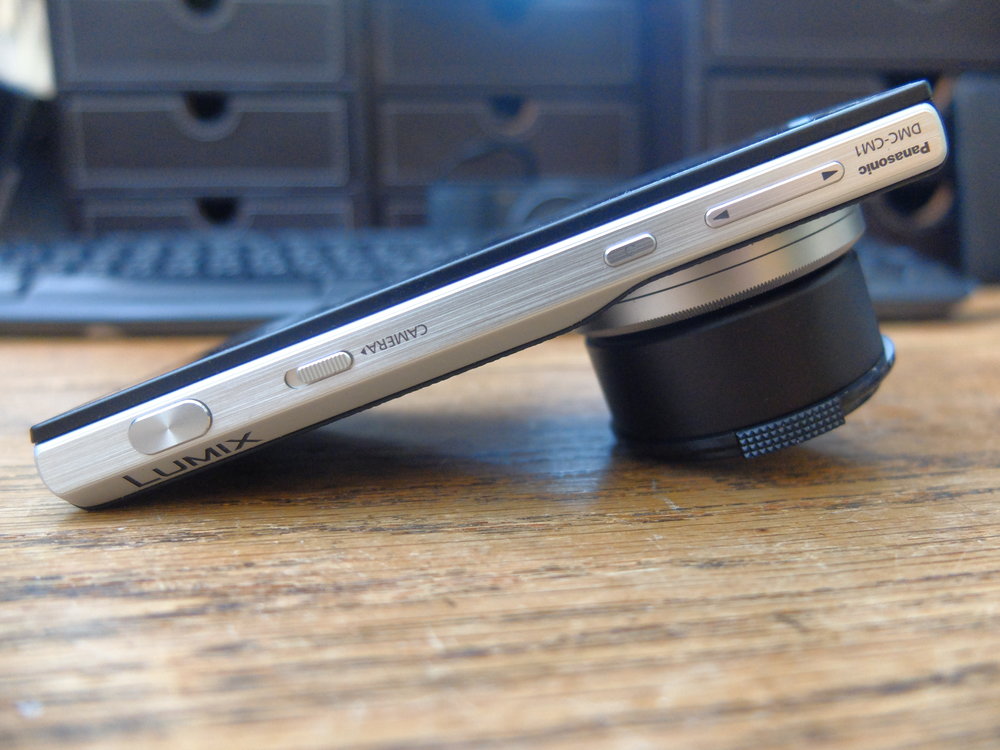
I’ll pause at this point to allow certain members of the readership to draw breath. Palmer — with a Panasonic — with a LEICA lens? After all he’s said?
Well, yes. And your point is? I was very happy with my LC-1 and Digilux 2, not to mention the D-Lux 4 with which I whiled away many a happy hour before seeing the light and moving to Fuji. If Fuji did an equivalent… Anyway, the CM1 comes, courtesy of the tie up with Leica, fitted with a Leica DC Elmarit aspherical lens with a bright f/2.8 aperture. Now I KNOW it’s not a proper Leica lens, but let’s see how it does, shall we? The fact that the optics are backed by a whopping 1-inch, 20mp sensor makes life jolly interesting. More so when you realise that this beast can shoot raw…
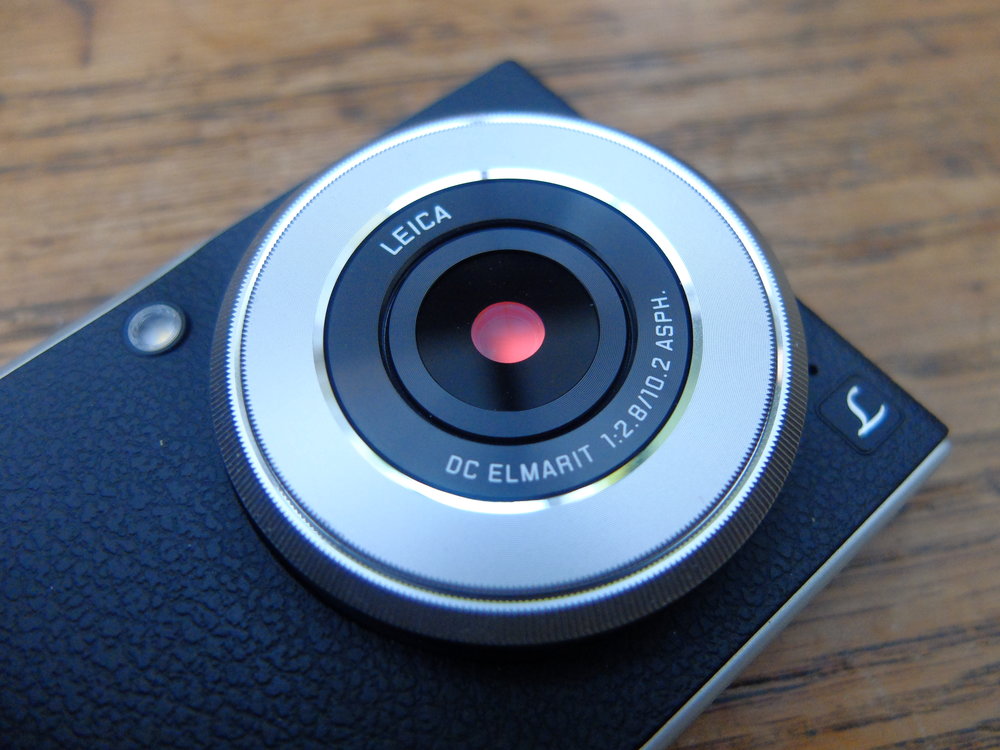
It’s interesting to read between the lines of the Panasonic press materials. They refer to the CM1 as a “Communication Camera”. Remember my point in the last article on the woeful Ektra, that I have been seeking a CAMERAphone not a PHONEcamera? I’m pleased to note that the people at Panasonic at least seem to be thinking along similar lines.
Working phone
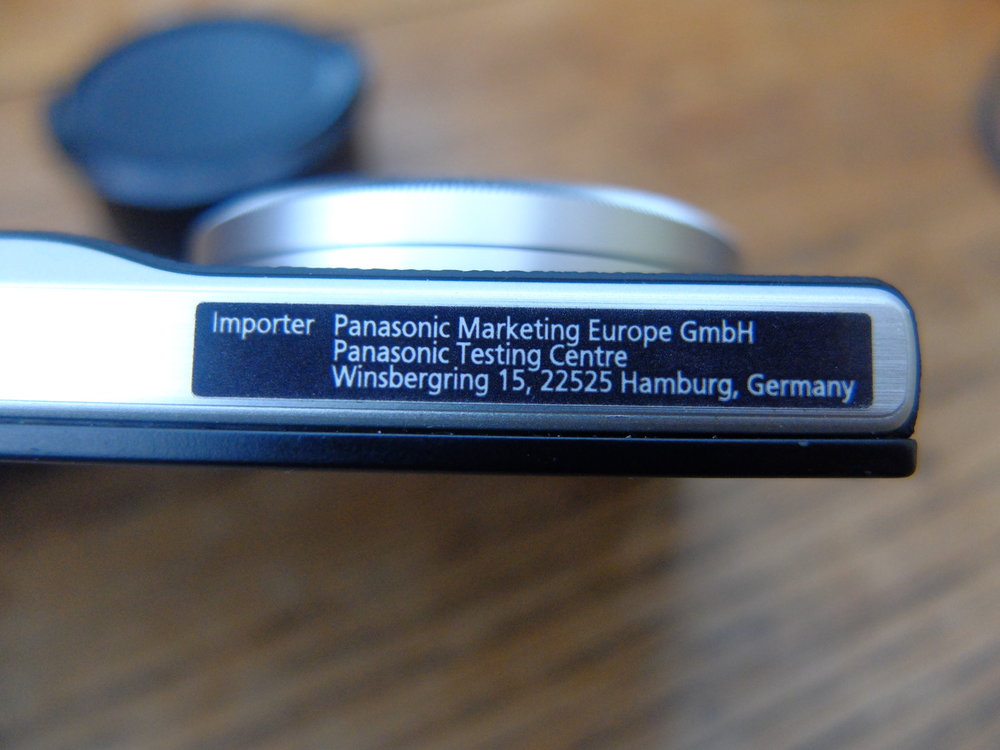
Let’s deal with the phone bit first. It works. It’s stock Android so it bloody well should. I have no complaints in this department and the Snapdragon quad-core processor makes things snappy. The 4.7″ screen isn’t as big as the one on my Sony Z Ultra (few things are) but it is sharp enough to shave with and offers crisp, natural colours. One of the joys of an Android device is the ability to extend the onboard memory and the first thing I did was pop in a 128mb micro SD card — that should keep me going for some time.
On the flipside — literally — is the camera. I find it very interesting and again encouraging that Panasonic list the camera specs first on their website, and in greater detail than the phone specs. This is positioned as a fixed-lens premium compact camera with a phone attached.
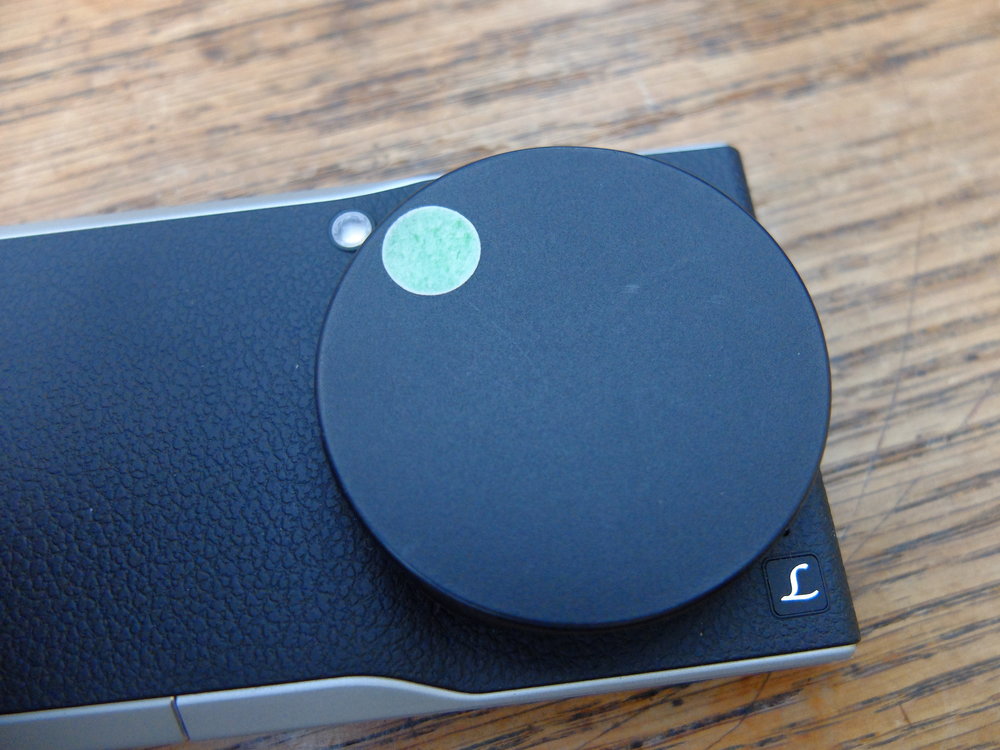
Just a little diversion at this point. Here’s something to ponder. The technology required to put a SIM card into a DSLR or mirrorless camera is not difficult — far from it. The benefits of having an always-on data connection in a truly capable camera are surely compelling — aren’t they? So why is NOBODY offering it? I strongly suspect a bit of protectionism going on, on the part of the phone companies — just a bit of conspiracy theory while I’m about it. To be blunt, I’m struggling to understand why we still have little bits of plastic and metal in the form of SIM cards anyway — they could easily be replaced by software. Perhaps someone who knows more about mobile telco could chime in at this point and enlighten us?
Anyway, back to the plot. The back (front?) of the CM1 is dominated by a proper lens. With a ring. That ring can be repurposed via the menu settings but I, like I suspect most people, have set it to use as an aperture control. The up and down volume buttons are also reprogrammable, and I have chosen in turn to set them to adjust exposure compensation. There’s a dedicated shutter button (hooray!) under your right index finger just where it should be. All good so far.
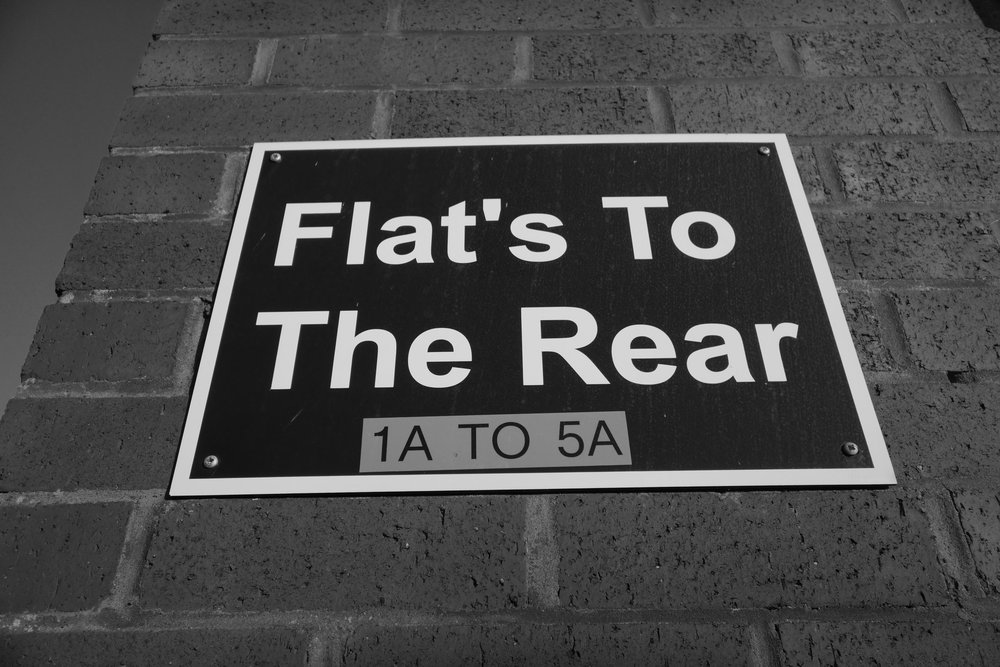
Viewfinderless
No, of course there’s no viewfinder, either electronic or optical. One has to compose on the rear screen. Other reviewers report that this is hard to use in bright sunlight but it’s January in England, so I can’t comment on that for at least another six months. What I can say is that the screen is sharp and responsive and focus is easy to see.
I initially set the camera to my standard personal defaults. Aperture priority, auto ISO limited in this case to 6400, JPG fine + raw (more of that later), spot focus and metering, and of course, I disabled that bloody touch screen. There are two custom modes and I set one to mono and the other to vivid colour (there are various scene modes too, but I haven’t played with them yet).
Below: With the Ricoh GR (click to enlarge)
So let’s just pause for breath. I have a PHONE that is configured and behaving like a CAMERA. I have a sensible sensor and lens, and a good degree of manual control via familiar dials and buttons. Nirvana.
…well, not quite. The first thing to note about the CM1 in its bare form is that it has, like every smartphone, the haptics of a bar of chocolate; one of those Lindt ones, with the cardboard wrapper. There is a rudimentary hand-grip — certainly more than 99.9% of smartphones offer — but it is of limited help. More of that later, too.
The other drawback is the same as every other smartphone on the market — the oft-referred-to lack of battery longevity. If you hammer it hard, the little Panasonic will give up the ghost long before the end of the day. My answer to this is to carry a small power bank — I favour Zendure — and top it up when I get a chance. As I say, this is a fundamental issue for all these devices. Battery tech needs to catch up with device usage and until it does we will all suffer; a long day out means a severely depleted battery, whether you are taking photos or updating your Faceache status.
Of course this is where the converged device is at a particular disadvantage. Carry a phone and a camera and you have two bites at the battery cherry. I’ve never been caught short when I’ve carried two — now I’m having to be a bit more circumspect. Let’s be honest, it’s not the end of the world if your camera gives up the ghost late in the day but your phone is more fundamental, relied upon for everything from boarding passes to phone calls, there are times when you cannot afford to be without.
No OIS
The third issue relates specifically to using the CM1 as a camera. There’s no OIS. I suspect there just isn’t room to put the necessary bits into the slimline body — or perhaps it would bump up the cost just a bit too much — but it means that a steady hand is essential. So…
…let’s go back to the handling. The CM1 as it comes out of the box lacks even so much as a lens cap. I’m more than a little twitchy about this so the first thing I did was fabricate one out of an old binocular cover. It needed a little trimming down of the soft plastic to fit tightly, but did the trick.

However a lens cover, while it improves pocketability, does nothing for handling in photographic use per se. So the next thing I did was invest in a lens hood — the silver ring around the lens unscrews to reveal a 37mm female thread. It was a simple matter to get a suitable hood from Amazon. Fitted, it helps steady the camera considerably by giving the left hand something to grip on to. Twiddling the aperture ring becomes easier and the whole thing is simply nicer — and more camera-like — to use. If you leave the hood in place (the one I have takes a 46mm snap-on hood) you also end up with a handy desktop phone rest — but it certainly won’t fit into your pocket anymore.
Compromise, compromise…
The answer, such as it is, comes from Japan in the shape of a dedicated case from Cotta. I purchased the euphoniously-named “Hard Jacket II” and, after a couple of weeks of waiting, it turned up with the usual extortionate customs fees (roll on new trade agreements…). Now, this case could almost warrant an item all on its own. Like most of us I have had as many — if not more — cases as I have had phones over the years. I generally go out of my way to avoid “faux”, “split”, or “PU” leather — all of which are inferior to the real thing — but in this case (pun intended) I had little choice.
Below: The Cotta hard case (click to enlarge)
But the Cotta case, when it arrived, can best be described as a work of art. It is more finely made than any phone case I have ever previously encountered and almost certainly any camera case either. The CM1 fits snugly inside, secured (slightly unnecessarily) by a magnetic clasp. The phone side is open to the elements (I have fitted a screen cover — if you look closely you can see the inevitable bubble) but the clever bit is on the camera side, where Cotta have fabricated a drop-down flap, vaguely reminiscent of a Contax T or a Minox 35. This not only protects the lens elements when not in use but also acts as a hand-grip when taking photos; again the lack of OIS becomes less of an issue. The other clever bit of this panel is that it allows room for the lens to extend while it is closed; I fear that something snug-fitting might result in problems with the mechanism, and it is all too easy to move the dedicated camera activation switch when the CM1 is bumping about in a pocket.
So, that’s the tour. Let’s try it out. You’ll see from the photos that I have sat the CM1 alongside the Ricoh GR and it is that against which I shall compare it. I’ll say at the outset that if I am planning specifically to take photos on a trip, I’d use the GR every single time, but that’s not the point. Let me draw an analogy. You could carve the Sunday roast with a Swiss Army Knife, but you wouldn’t. Equally, you could open a paint tin with a Sabatier carving knife but you wouldn’t. One is a precision instrument designed for a very specific purpose and the other a multi-function device. So it is with the Ricoh and the Panasonic; it all comes down to the end in mind.
Camera of the month
In order to accelerate my usage of the CM1 I have decided to employ it this month as my tool of choice for the Serious Compacts “Single in January” event; this takes place every year and the only real rules are that you take (and post) a picture a day and that you use a single camera for all 31 days. A number of people each year use the exercise as a way to get to grips with a new camera or one with which they have previously struggled to bond. The CM1 fits the brief perfectly. It is small enough to carry everywhere and capable enough to hold its own in quite exalted company.
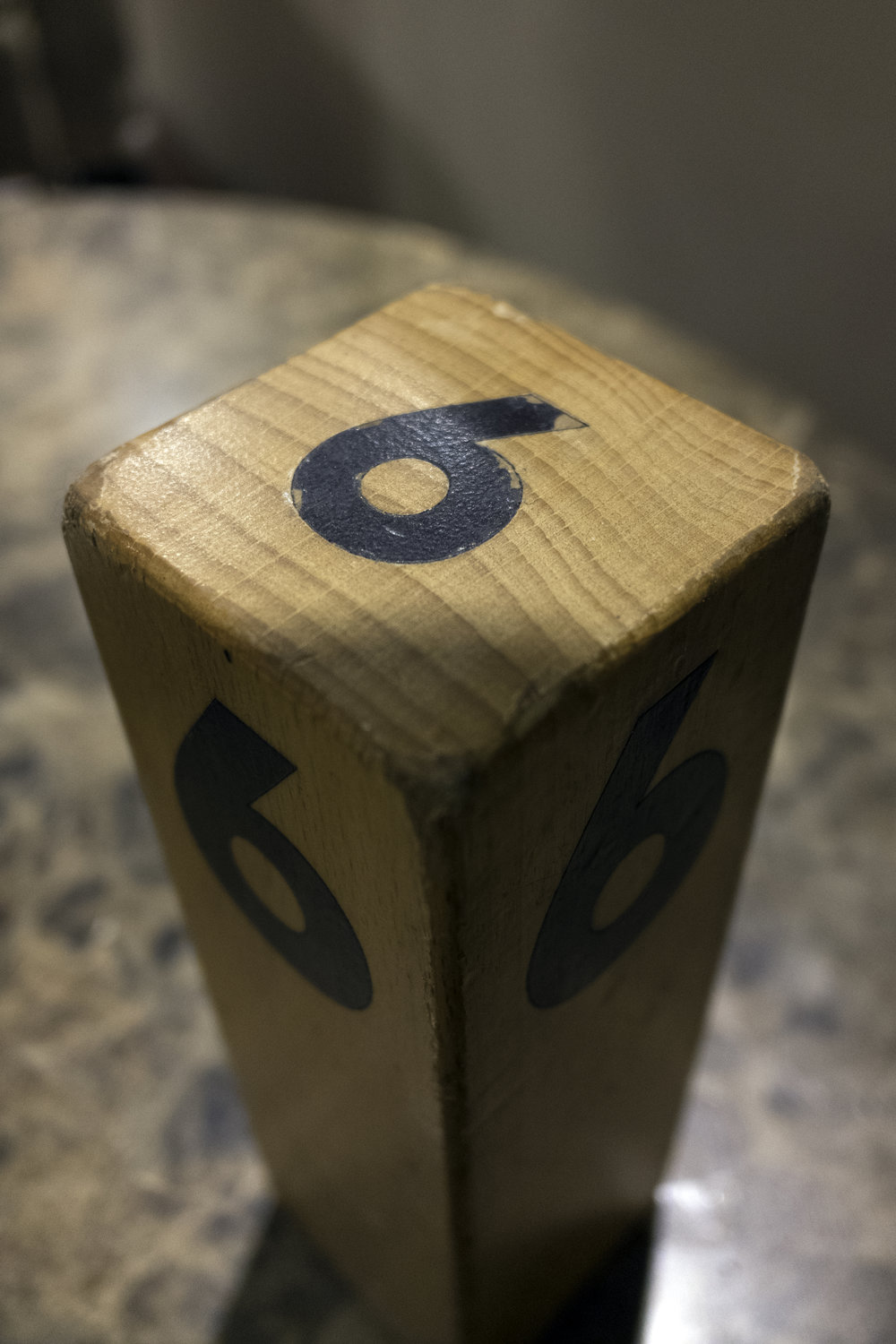
It’s not a proper Leica lens, of course — we all know by now how the tie up with Panasonic works — but it is commendably sharp. At f/2.8 it delivers less bokeh than the Ricoh, but the 20mp gives more scope to crop compared with the GR’s now rather ageing 16mp sensor. There’s a digital zoom facility, by the way, but only if you shoot jpg-only — add raw and you are stuck with the 28mm-equivalent single focal length. No harm there, but worth noting. After some use and some considerable twiddling I have to say I actually prefer to shoot in colour with the CM1 and convert later; the Panasonic black and white settings are nothing to write home about generally, let alone compared to the exceptional GR and its mono capabilities.
Thing is, this is not an issue. Where the Panasonic scores big-time over the Ricoh is that it doesn’t just have a basic raw developer and editor built in, it puts all the power of an Android operating system and a wide choice of editing software at your fingertips. I favour Snapseed and am pleased by the results. I’m also pleased by the malleability of the SOOC jpgs when posting to Instagram. This is where the CM1 comes into its own. You can shoot, edit and upload in real-time. You can also backup easily; I’ve linked my CM1 to my Google Photos album and allow both jpg and raw files to be uploaded automatically whenever in range of a suitable wifi connection.
Competent
Now I do know that all this is not new — these capabilities are pretty mainstream now — but the difference is that instead of a device with a little-fingernail sized sensor sitting behind a tiny lens we have here a ONE INCH, 20MP sensor matched to DECENT optics.
The CM1 is a competent camera. It has it’s limitations, but it is the first actual CAMERAphone that I have come across. There are compromises, to be sure, but it is the first phone that gives me enough confidence to, on occasion, leave a proper camera at home and rely upon a non-dedicated smart device alone. It is certainly streets ahead of the woeful Kodak Ektra I wrote of earlier.
In fact, in concept and in where it sits on the evolutionary curve, I would, without more than a little irony, compare the CM1 in concept and execution to the Kodak Vest Pocket camera that was produced in vast numbers and in various incarnations from 1912 to 1935 (It didn’t actually fit in a vest pocket, of course, anywhere other than America, where that is the name given to a waistcoat).
The particular model variant I have in mind is the “Autographic”, specially intended to be used by the American “doughboys” in the trenches during the First World War. This little device could be regarded as the forerunner of the social media-capable handset in that it enabled notes to be written on the backing paper of the film whilst still in the camera. History doesn’t record exactly how much space was available but I doubt very much you could fit more than 140 characters…
So I have replaced for now my trusty Sony Xperia Z Ultra with the little Panasonic. The screen is smaller, the battery life shorter and it’s not waterproof, but it can take pictures — almost as well as my GR.
There’s only one little niggling, nagging thought in the back of my mind. In the CM1 Panasonic have produced the ultimate cameraphone — but it first saw the light of day in 2014. It’s still available new if you know where to look, but there has not been a version 2 to date. Initial reviews spoke highly of it, but Panasonic seem to have hardly marketed it at all. It was sold in the UK through camera shops not through phone shops and the ecosystem was not developed; there are for example a couple of contacts on the side, presumably for charging in a docking station, but that never saw the light of day. I can’t help but feel that this is symptomatic of the fact that the high-end, highly capable cameraphone is neither fish nor fowl; the value proposition appeals to me, as a keen and experienced photographer, but it is priced out of the reach of the average user and is ultimately neither an exceptional camera nor an exceptional phone.
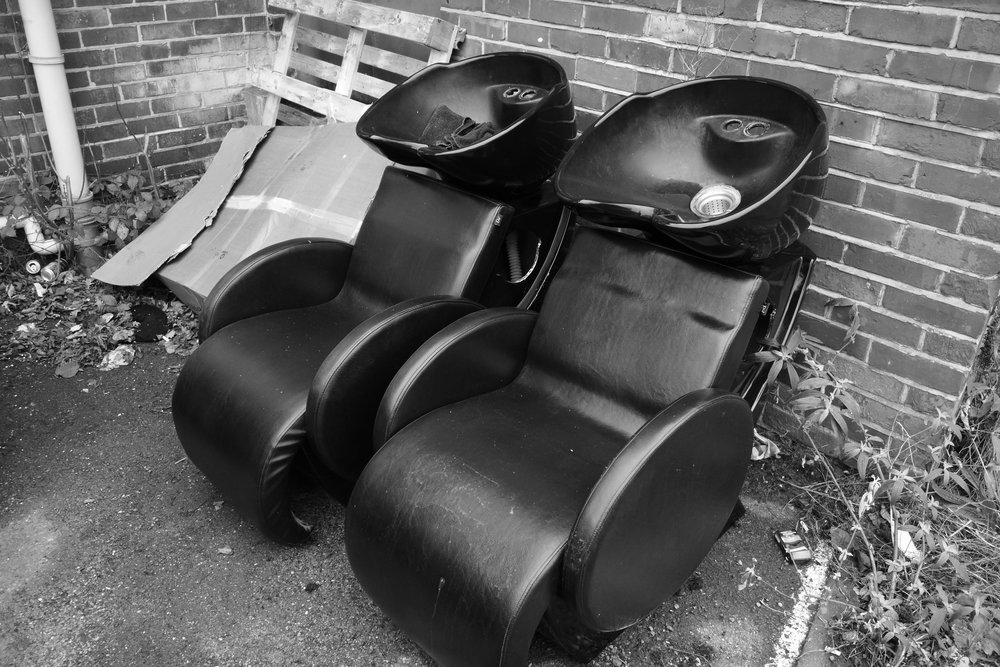
Visual notebook
This whole story — the lamentable Ektra included — is a tale of compromises and of devices looking for a market, if not for a use case. Ultimately, when I go out to take pictures, I’ll still take a proper camera with me. When I do pull out the CM1 it will be, like that little VP Kodak, because it is there, it is convenient and it does the job moderately well in a given set of circumstances. It will see use for me as a visual notebook, as an aide memoire and, as an integral part of a smartphone, as a vede mecum for modern living.
I’ll leave the last word on the subject for now to Doctor Johnson, for it was he who famously said: “Sir, a woman’s preaching is like a dog’s walking on his hind legs. It is not done well; but you are surprised to find it done at all.” Thus it is with cameraphones. This one just pleasantly surprises me a bit more than the others.
In the final part of this three-article series, I’ll look in more detail at current attitudes to smartphone usage for serious photography. Many today regard it as a viable alternative to a proper camera – but are they right, are they setting their standards too low — or are they just being a little premature?
_______________
- You can find more from Bill Palmer at Lightmancer and at Instagram
- Subscribe to Macfilos for free updates on articles as they are published. Read more here
- Want to make a comment on this article but having problems? Please read this

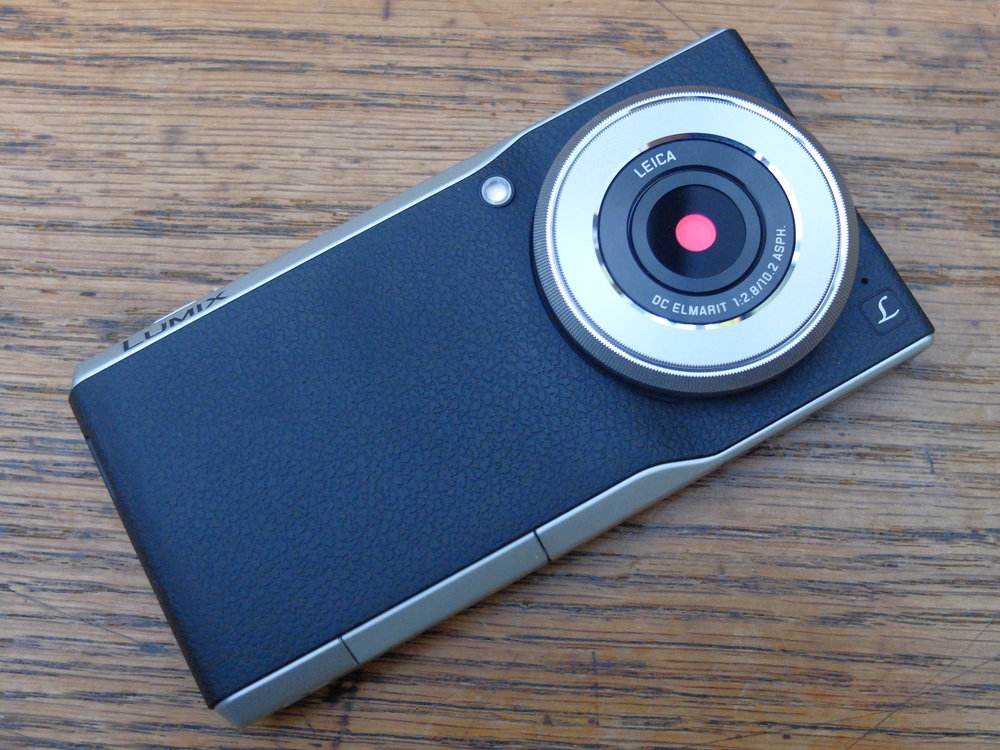
A very clear run through Bill, many thanks. I am waiting until this kind of package dips under £400 before I start seriously thinking of purchasing such equipment. But, as William observes, this could prove to be one of the first significant steps towards a true usable hybrid phone/camera for serious as well as amateur camera users.
David, I paid less than £400 for the demo version I have. Apart from a bit of heavy-handed micro SD card insertion in the past resulting in an (internal) scuff or two, it is absolutely mint. Shop around, you may be pleasantly surprised…
The real question here is whether this is good enough, both technically and commercially, to take market share away from Apple, Samsung, Huawei etc. Will this lead to the creation of a new market segment; a smartphone with a ‘really good camera’ or, to put it another way, a camera with a ‘really good smartphone’? If it does, the camera industry will have to look closely at whether it is worthwhile entering such a segment along with Lumix. The old paradigms are being turned on their heads very rapidly. Only time will tell whether this is the first step towards a new segment. My own feeling is that in 10 years from now, cameras, as we know them, will have a lot of connectivity but largely for image transfer/processing and that smartphones (or just communications devices) will have really good cameras plus the rest. In other words there will be an ongoing merging of imaging and communications devices. This device is a step along the road, I feel.
William
William, I think you and I are on the same track. "phone" is becoming a misnomer. the device on the desk in front of me has more in common with something from Star Trek than Alexander Graham Bell. The two things that really constrain – the user interface (keyboard and screen) and battery life – will not be problems forever. We are still right at the start of the journey and like any evolution there will be dead-ends. What I rail against is the acceptance of mediocrity just because it is in a small package. More follows…
Many thanks for the run through Bill, I have looked at this device a couple of times and read a couple of reviews…
One of the reviewers had somehow bricked his display, which he decided was an advantage… his thumb was no longer on a sensitive part of the display while he was using the camera!
… Move along there.
Even though I had my issues with the Ricoh GRrrr, I think I would prefer it (or perhaps the X70) over the CM1.
For the present, I will treat the phone as the remarkable "jack of all trades" device that it has become…
… A so-so camera, a mapping device, a great dictionary/encyclopaedia, a diary, a satnav, a walkman, a central heating/coffee machine switch, a remote control, and among many others… a phone… Truly remarkable.
I must apologize for not being a comment about your main topic… But I could not help notice a filter in front of your GR II… ??? What?? How is that possible? I am looking at mine and the only thing I can think of would be to stick/glue it to the front… Is that what you have done?
Heh. Not a problem, Chris.
It is a filter. From Acmaxx. It’s a bit fiddly to apply, but there is a thin self adhesive ring that holds it in place. One of these saved the lens on my GRDIII when I drove over it (long story…) Interestingly, I know that the GR has a reputation for dust on the sensor but I fitted this filter when I got mine new and have not been troubled by dust bunnies thus far…
Thanks for the answer Bill! I think this is a great solution to avoid the dreaded dust on the sensor. I will definitely look into getting one of those.
I’ve had 3 distinct dust bunnies in my GR for the past 2 years. They show up in the same place in all of my shots. Three clicks with the clone/heal tool on your favourite image and they’re gone! No sweat!
Glad to see you are still reading, Treve. I had better have a look at my GR but I haven’t noticed any of those dust bunnies yet.